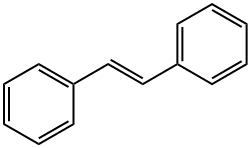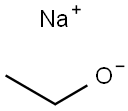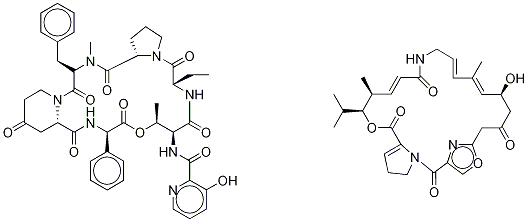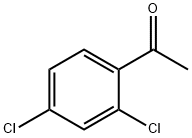trans-1,4-Dichloro-2-butene
- CAS NO.:110-57-6
- Empirical Formula: C4H6Cl2
- Molecular Weight: 125
- MDL number: MFCD00000988
- EINECS: 203-779-7
- SAFETY DATA SHEET (SDS)
- Update Date: 2024-12-18 14:15:32

What is trans-1,4-Dichloro-2-butene?
Chemical properties
clear colorless to light yellow liquid
Chemical properties
The 1,4-dichloro-2-butenes are colorless liquids. Some have a distinct odor. (cis-isomer)
The Uses of trans-1,4-Dichloro-2-butene
1,4-Dichloro-2-butene is used in the synthesis of anthraquinones used in the asymmetric dihydroxylation of olefins. Also used to prepare arylcarboxamides used as novel dopamine receptor antagonists.
Definition
ChEBI: Trans-1,4-Dichlorobutene is an organochlorine compound.
Synthesis Reference(s)
Journal of the American Chemical Society, 73, p. 2118, 1951 DOI: 10.1021/ja01149a061
The Journal of Organic Chemistry, 36, p. 2088, 1971 DOI: 10.1021/jo00814a013
General Description
Colorless liquid with a distinct odor. An intermediate for hexamethylenediamine and chloroprene.
Air & Water Reactions
Insoluble in water.
Reactivity Profile
trans-1,4-Dichloro-2-butene will burn, though trans-1,4-Dichloro-2-butene may require some effort to ignite. Fire produces irritating and poisonous gases. When heated to decomposition, trans-1,4-Dichloro-2-butene emits toxic fumes of chlorine-containing compounds. [EPA, 1998].
Health Hazard
(Non-Specific -- Dichlorobutene) Liquid and vapors from the material are highly corrosive and may damage skin, eyes, lungs, and internal organs.
Fire Hazard
The material will burn, though trans-1,4-Dichloro-2-butene may require some effort to ignite. Fire produces irritating and poisonous gases. When heated to decomposition, trans-1,4-Dichloro-2-butene emits toxic fumes of chlorine-containing compounds.
Potential Exposure
DC occurs as a by-product in chloroprene manufacture and may be used as a chemical intermediate
Shipping
UN3384 Toxic by inhalation liquid, flammable, n. o.s. with an LC50 ≦ 1000 ml/m3 and saturated vapor concentration ≧to 10 LC50, Hazard class: 6.1; Labels: 6.1-Poisonous materials, 3-Flammable liquid, Technical Name Required, Inhalation Hazard Zone B. UN2920 Corrosive liquids, flammable, n.o.s., Hazard class: 8; Labels: 8-Corrosive material, 3-Flammable liquid. The code “D” identifies proper shipping names which are appropriate for describing materials for domestic transportation but may be inappropriate for international transportation under the provisions of international regulations, e.g., IMO, ICAO). An alternate proper shipping name may be selected when either domestic or international transportation is involved
Incompatibilities
Vapors may form explosive mixture with air. Incompatible with oxidizers (chlorates, nitrates, peroxides, permanganates, perchlorates, chlorine, bromine, fluorine, etc.); contact may cause fires or explosions. Keep away from alkaline materials, strong bases, strong acids, oxoacids, and epoxides. (cis-isomer): Reacts slowly with water forming hydrogen chloride. Attacks metals and may form other, more dangerous materials; attacks some plastics.
Waste Disposal
High-temperature incineration with hydrochloric acid scrubbing. Consult with environmental regulatory agencies for guidance on acceptable disposal practices. Generators of waste containing this contaminant (≥100 kg/mo) must conform with EPA regulations governing storage, transportation, treatment, and waste disposal.
Properties of trans-1,4-Dichloro-2-butene
| Melting point: | 1-3 °C(lit.) |
| Boiling point: | 74-76 °C40 mm Hg(lit.) |
| Density | 1.183 g/mL at 25 °C(lit.) |
| vapor pressure | 10 mm Hg ( 20 °C) |
| refractive index | n |
| Flash point: | 129 °F |
| storage temp. | 2-8°C |
| solubility | Chloroform, Ethyl Acetate |
| form | Oil |
| color | Clear Colourless to Light Yellow |
| BRN | 1719693 |
| CAS DataBase Reference | 110-57-6(CAS DataBase Reference) |
| IARC | 3 (Vol. 15, Sup 7, 71) 1999 |
| NIST Chemistry Reference | 2-Butene, 1,4-dichloro-, (E)-(110-57-6) |
| EPA Substance Registry System | trans-1,4-Dichloro-2-butene (110-57-6) |
Safety information for trans-1,4-Dichloro-2-butene
| Signal word | Danger |
| Pictogram(s) |
 Flame Flammables GHS02  Corrosion Corrosives GHS05  Skull and Crossbones Acute Toxicity GHS06 |
| GHS Hazard Statements |
H226:Flammable liquids H301:Acute toxicity,oral H312:Acute toxicity,dermal H314:Skin corrosion/irritation H330:Acute toxicity,inhalation |
| Precautionary Statement Codes |
P210:Keep away from heat/sparks/open flames/hot surfaces. — No smoking. P233:Keep container tightly closed. P280:Wear protective gloves/protective clothing/eye protection/face protection. P303+P361+P353:IF ON SKIN (or hair): Remove/Take off Immediately all contaminated clothing. Rinse SKIN with water/shower. P305+P351+P338:IF IN EYES: Rinse cautiously with water for several minutes. Remove contact lenses, if present and easy to do. Continuerinsing. |
Computed Descriptors for trans-1,4-Dichloro-2-butene
| InChIKey | FQDIANVAWVHZIR-OWOJBTEDSA-N |
New Products
Tert-butyl bis(2-chloroethyl)carbamate (S)-3-Aminobutanenitrile hydrochloride N-Boc-D-alaninol N-BOC-D/L-ALANINOL N-octanoyl benzotriazole 4-Hydrazinobenzoic acid 3,4-Dibenzyloxybenzaldehyde Electrolytic Iron Powder 1,1’-CARBONYLDIIMIDAZOLE R-2-BENZYLOXY PROPIONIC ACID 4-HYDROXY BENZYL ALCOHOL 1,1’-CARBONYLDI (1,2-4 TRIAZOLE) S-2-CHLORO PROPIONIC ACID (2-Hydroxyphenyl)acetonitrile 4-Bromopyrazole 5-BROMO-2CYANO PYRIDINE 5,6-Dimethoxyindanone 5-broMo-2-chloro-N-cyclopentylpyriMidin-4-aMine 3-(Hydroxymethyl)benzoate N-Boc-2-chloroethylamine 1-Bromo-2-methoxy-3-nitrobenzene N-Methyl-3-cyclopenten-1-amine 2-Bromo-3-hydroxybenzaldehyde 1H-indazole-5-carboxamideRelated products of tetrahydrofuran








You may like
-
 7441-43-2 98%View Details
7441-43-2 98%View Details
7441-43-2 -
 1260741-78-3 6-Bromo-3-iodo-1-methyl-1H-indazole 98%View Details
1260741-78-3 6-Bromo-3-iodo-1-methyl-1H-indazole 98%View Details
1260741-78-3 -
 (3-Benzyloxypropyl)triphenyl phosphonium 98%View Details
(3-Benzyloxypropyl)triphenyl phosphonium 98%View Details
54314-85-1 -
 4-bromo-3,5-dimethylbenzenesulfonyl chloride 1581266-79-6 98%View Details
4-bromo-3,5-dimethylbenzenesulfonyl chloride 1581266-79-6 98%View Details
1581266-79-6 -
 2490430-37-8 98%View Details
2490430-37-8 98%View Details
2490430-37-8 -
 N-(5-Amino-2-methylphenyl)acetamide 5434-30-0 98%View Details
N-(5-Amino-2-methylphenyl)acetamide 5434-30-0 98%View Details
5434-30-0 -
 124371-59-1 98%View Details
124371-59-1 98%View Details
124371-59-1 -
 53857-52-2 98%View Details
53857-52-2 98%View Details
53857-52-2